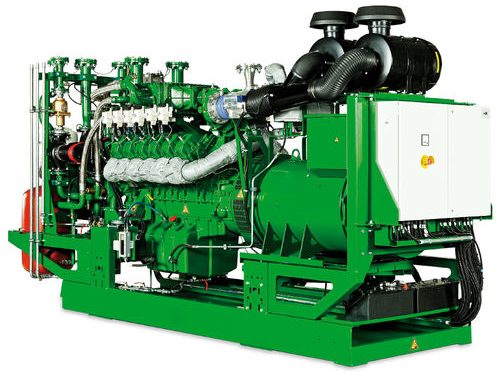
Biogas Generator
In a world increasingly driven by the urgent need for sustainable energy sources, it emerges as a promising solution. This innovative technology leverages natural processes to transform organic waste into a valuable energy resource, offering numerous environmental and economic benefits. From its origins to its applications, this article explores the concept of a biogas generators, its components, and its role in the transition towards a more sustainable future.
Understanding Biogas
Biogas is a renewable energy source produced through the decomposition of organic materials in an oxygen-free environment. This natural process occurs in landfills, wastewater treatment plants, and within the digestive systems of animals, leading to the release of biogas primarily consisting of methane (CH4) and carbon dioxide (CO2). Methane, in particular, is a potent greenhouse gas when released directly into the atmosphere, contributing to global warming. Capturing and utilizing it as an energy source not only mitigates its environmental impact but also provides a renewable and sustainable alternative to fossil fuels.
The Biogas Generator
It is also known as a biogas digester, is the technology that enables the controlled production and utilization of biogas. It consists of several components and a well-defined process to maximize efficiency and safety.
- Feedstock
The feedstock for biogas generation primarily comprises organic materials such as animal manure, agricultural waste, food scraps, and sewage sludge. These materials serve as the raw input for the digester.
- Anaerobic Digester
The heart of the biogas generator is the anaerobic digester, a sealed, oxygen-free chamber where microorganisms break down the organic matter through a series of complex biochemical reactions. These microorganisms, mainly methanogens, produce biogas as a metabolic byproduct. Anaerobic digestion is a critical process in biogas generation, as it ensures the conversion of organic waste into methane and carbon dioxide.
- Gas Storage and Management
Biogas produced in the digester is typically stored in gas holders or tanks to facilitate its controlled release and distribution. Storage is essential because biogas production may not always align with energy demand. The gas can then be transported to a central location for further processing and utilization.
- Gas Utilization
Once collected and stored, the biogas can be used for various applications, including electricity generation, heating, and fuel for vehicles. Combined heat and power (CHP) systems, such as biogas engines or turbines, are commonly employed to convert the biogas into electricity and heat simultaneously. Alternatively, the gas can be refined to produce biomethane, a purer form of methane suitable for injection into natural gas grids or as a clean vehicle fuel.
Environmental Benefits
The adoption of biogas generators brings about a range of environmental advantages, making them a significant player in the movement towards sustainability.
- Methane Emission Reduction
By capturing and utilizing methane from organic waste, biogas generators significantly reduce methane emissions, which is crucial in mitigating climate change. The destruction of methane as a greenhouse gas through energy production prevents its release into the atmosphere.
- Waste Diversion
Biogas generators provide a sustainable solution for organic waste management. Rather than sending these materials to landfills or incinerators, where they may release harmful greenhouse gases or contribute to pollution, the waste can be converted into biogas, addressing both waste reduction and energy generation needs.
- Reduced Reliance on Fossil Fuels
Biogas represents a renewable energy source that reduces the dependence on fossil fuels. Its applications in electricity generation and transportation fuel can help decrease greenhouse gas emissions and combat air pollution, leading to cleaner and more sustainable energy.
Economic Benefits
Beyond their environmental advantages, biogas generators offer economic benefits for various stakeholders.
- Energy Production
Biogas generators provide a consistent and renewable source of energy, which can be harnessed for both electricity generation and heat production. This can result in significant cost savings for businesses and municipalities, as well as a reliable source of income for farmers and waste treatment facilities.
- Rural Development
In rural areas, biogas generation can stimulate economic growth. Farmers can use their agricultural waste to produce biogas, which not only reduces waste management costs but also generates additional income through the sale of electricity or heat to the grid.
- Job Creation
The biogas industry also creates job opportunities in various sectors, from installation and maintenance of biogas systems to waste collection and transportation.
Challenges and Considerations
While biogas generators offer numerous advantages, several challenges and considerations must be addressed for their successful implementation.
- Feedstock Availability
The availability and quality of feedstock are crucial factors in biogas production. Adequate supplies of organic waste are required to maintain continuous biogas production, making it important to establish reliable sources of feedstock.
- System Design and Maintenance
Proper system design, operation, and maintenance are essential for efficient biogas production. The digester must be sealed and insulated to prevent gas leakage and maintain the optimal temperature and pH levels for microbial activity.
- Economic Viability
The economic feasibility of Biogas generator depends on factors such as the cost of the digester, energy conversion technology, and incentives for renewable energy. It is important to ensure that the system’s operational and maintenance costs do not outweigh the economic benefits.
The Way Forward
The biogas generators stands as an innovative and sustainable solution to various environmental and economic challenges. Its ability to harness the energy potential of organic waste while reducing greenhouse gas emissions makes it an invaluable tool in the transition to a greener future.
As technology advances and the demand for sustainable energy sources grows, biogas generator is poised to play an even more significant role in the global energy landscape. Investments in research and development, supportive policies, and widespread adoption can help unlock the full potential of this environmentally friendly and economically viable energy source. By harnessing the power of biogas, we can create a more sustainable, cleaner, and prosperous world for future generations.
